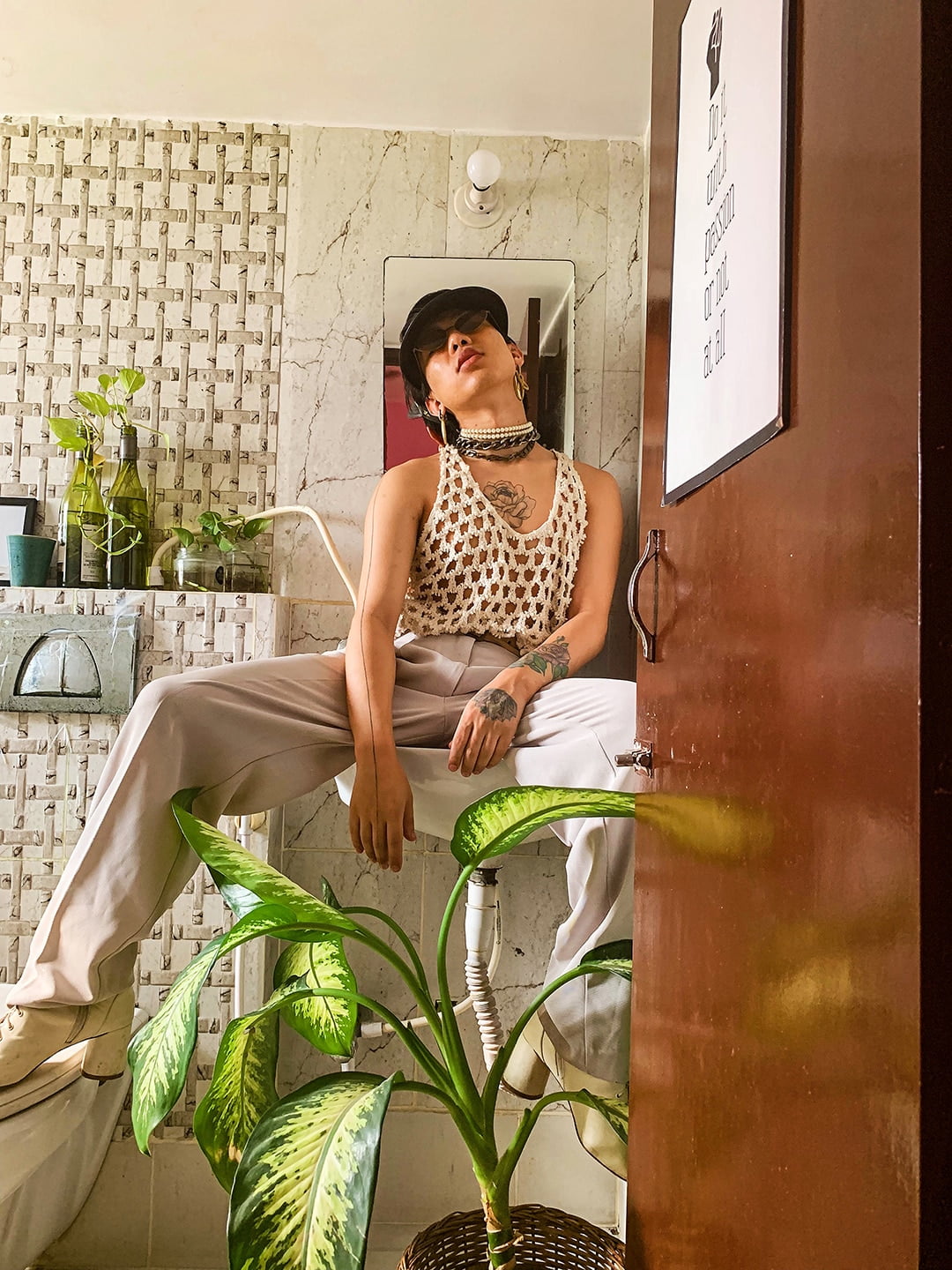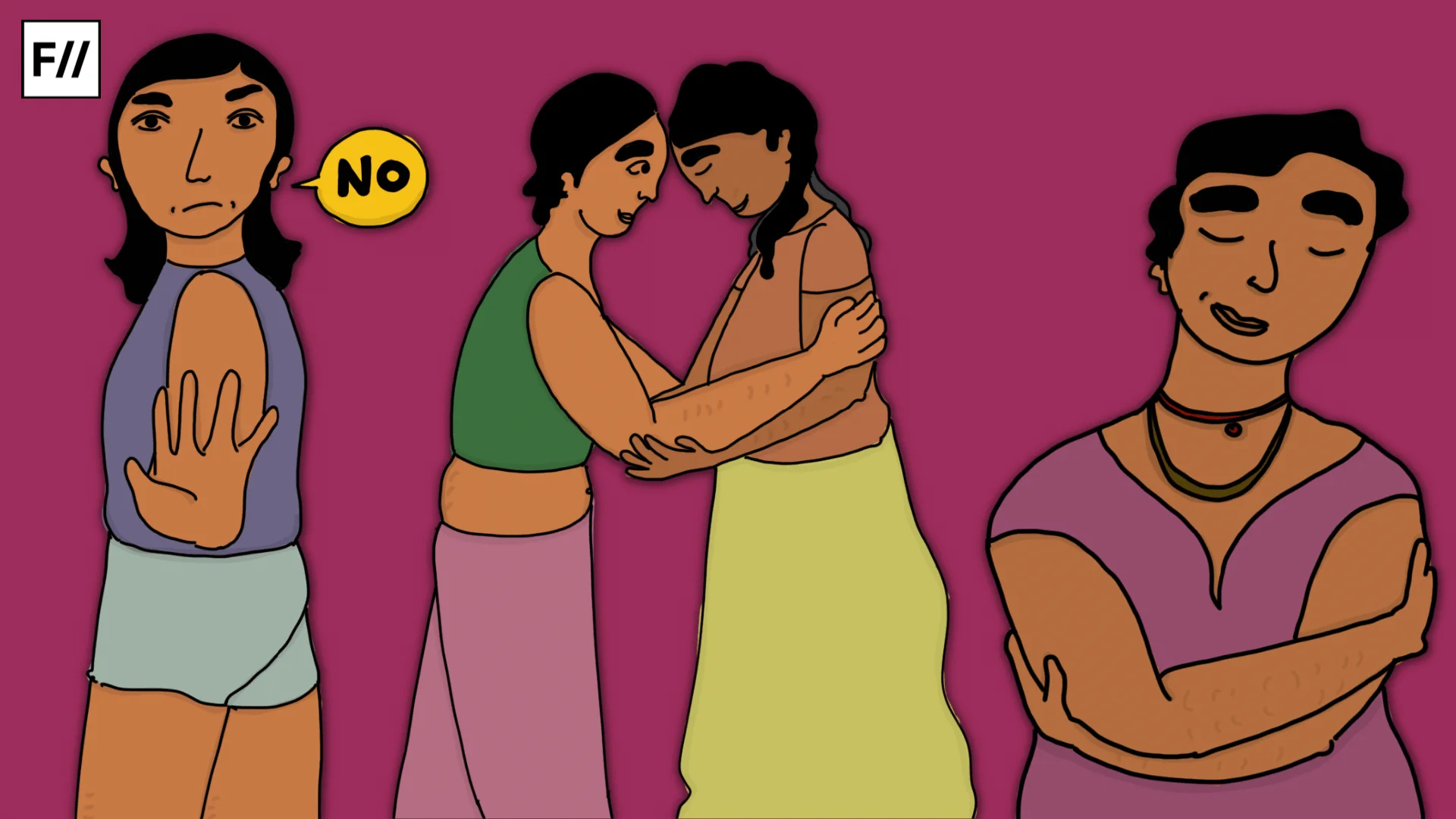Clothing can be a representation of who you are. As it says and speaks a lot about you, about your personality or your true self. Sexuality has nothing to do with clothing.
Joan Dominic Rai
Introduced through the works of feminist philosopher, Judith Butler, the term ‘gender performativity’ implies that gender is socially constructed through ritually reproduced performative acts. These acts have been consolidated over time and serve as yardsticks against which masculinity or femininity ought to be measured. Performative acts encompass various tools including commonplace speech, nonverbal communication, and even fashion. The conflation of clothing with gender and sexuality, has not only upheld the binary concept of gender, but also birthed a rigid compartmentalisation in gender and has assigned the same to clothing. Notions of ‘utility’ take a backseat, as affiliation with a certain gender is the primary basis on which individuals pick clothing.
“Gender is a very diverse concept and for an individual it takes forever, maybe sometimes a lifespan, to understand oneself completely. I have been through a journey of understanding myself my whole life and every day I figure out something more. So it is not fair for anybody to categorise someone in terms of how they look or what they wear…..Clothing Might be a visual representation or a synopsis of an individual but it does not define who He or she is..Just because someone is wearing makeup or maybe a woman’s clothing that doesn’t make him queer or to be honest, an ally….It also takes a lot of understanding and self searching to become a true ally.“
Joan Dominic Rai, who goes by the name, @thewhitehairedguy on Instagram, is a Kolkata-based gender-fluid fashion influencer and designer. He views fashion as a medium of self-expression, and storytelling. While for most, the ‘functionality’ aspect of fashion, the determinant of which is gender, takes the front seat, for Rai, it the ‘art’ and the ‘aesthetics’ fashion embodies that is important. To him, it goes beyond the realms of gender, and functions as an outlet for creative expression.
Fashion is a sphere whose guiding force is predominantly gender. As an industry, it has sustained and reinforced the hetero-normative ideals of gender. Despite the drastic evolution of fashion in the past few decades, its reliance on heteronormativity is one that largely remains unchanged. Not only do clothing pieces, fabric colours, and other sartorial tools forge a stark contradiction between men and women clothing, but “ideal” body types, and gendered notions of masculinity and femininity also guide fashion. With outdated socio-cultural norms of clothing and gendered expectations dominating the realm of fashion, androgynous fashion creates ripples in the outwardly still waters.
To be honest, there’s no colour or silhouette to gender-fluidity. It’s about having the courage to be you. It’s to do with your mind: as long as you don’t see it as menswear or womenswear, you can be gender-fluid even in a pair of black jeans
Fashion is founded on years of conditioning, socio-cultural mandates of “acceptable” fashion, and layers of gendering that are often too interlinked to even effectively pinpoint, let alone unlearn. To go against sacrosanct notions of gendered fashion, is then a “bold” move. Rai’s journey of navigating the same didn’t come easily. “I was introduced to the idea of gender fluid fashion very early in life. Being very petite and tiny somehow made me unconsciously more inclined towards womenswear than menswear, as it fit me better and also gave me more options to choose from. Later in life however, after a lot of self-searching and struggles with my identity, I was able to break out of my mould and start exploring myself through different kinds of clothing. I had finally found my voice. It was powerful and liberating.“
Also read: Queering Fashion: Indian Fashion Industry Is Rejecting Gender Binary
Rai has also navigated these watertight compartments in an interesting way, not so much as making a statement, but as viewing comfort and authenticity as the primary determinants of fashion. Rai attests, “I am someone who has never liked ‘labels’. I wear anything I feel right wearing. I don’t care what people think, or if it ‘fits’. And now that ‘gender-fluidity’ is being talked about so much, it is great to see everyone accepting the blurring of boundaries. Men wearing a skirt, sari, or even a pearl necklace is now considered ‘stylish’. Personally, I like to wear elements that are not typically ‘male’. But it’s not to make a statement, it’s just what my style sensibility is. To be honest, there’s no colour or silhouette to gender-fluidity. It’s about having the courage to be you. It’s to do with your mind: as long as you don’t see it as menswear or womenswear, you can be gender-fluid even in a pair of black jeans.“

Storytelling, being an intrinsic part of his conceptualisation of “fashion”, Rai’s fashion is commensurate with his identity. In his quest of storytelling, Rai embellishes his fashion, with pieces from his cultural identity. “My earliest memory of jewelry was me trying to dress up and play around with pearl necklaces that belonged to my mother. As I grew older, I became intrigued by fashion, which for me is a language, and jewelry has become a part of that. It has allowed me to express my vision and my true self. I enjoy wearing pieces that have a special place in my heart and are truly representative of my heritage and cultural roots.”
Deviating from mainstream, gendered clothing is invariably tailed by questions pertaining to one’s sexuality. To dress in an “effiminate” manner is to be gay, just as to be a “butch” woman is to be a lesbian. The problematic binaries of man-woman, feminine-masculine, gay-lesbian, timelessly plays out in ways leaving no space for any ambiguity or investigation.
“As an artist and as an influencer I feel I have a responsibility to make people aware of how it is not wrong to be our true self and love ourselves for who we are in the truest of forms. I always knew I was different in a way I would wear my clothes or my characteristics so I was always looking for someone around me who I could look up to on who I wanted to become. There were not many people, rather no one in my country I could take inspiration from around that time. It was much before gender fluidity and before men wearing makeup in India was mainstream.“

Also read: Every Wrong Thing Fashion Heralds For Women
Androgynous fashion is still sporadic, and gendered dictums still dominate individual choice and autonomy in terms of clothing. There is, indubitably, a long way to go. However, artists and influencers like Rai, who occupy the ‘twilight zone’ in terms of gender and fashion, are subverting these tropes. This breach of heteronormativity itself, serves as a beacon of light for many.
Featured Image Source: Cosmopolitan
About the author(s)
Shaniya Karkada is a Postgraduate student of Sociology at Christ University. She believes in learning something new, no matter how small, everyday. She has many interests that constantly change, but the one that has remained is exploring Gender Studies.




